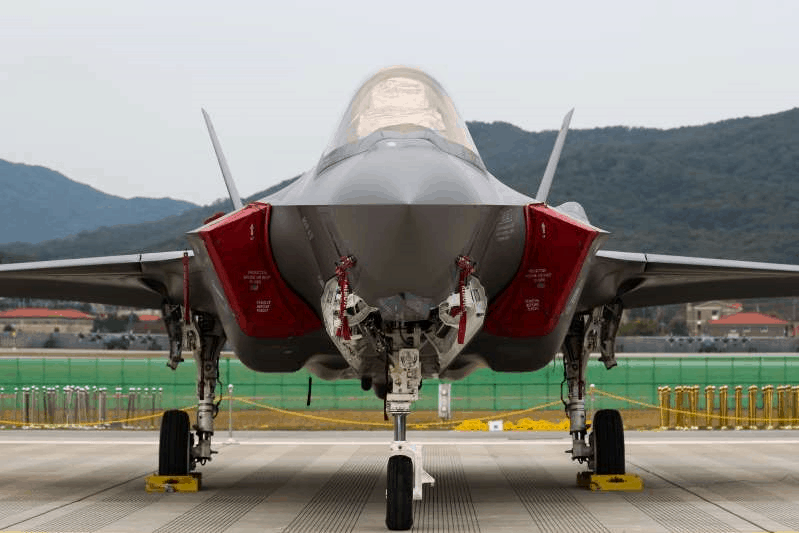F-35’s List of Flaws Includes a Gun That Can’t Shoot Straight

Add a gun that can’t shoot straight to the problems that dog Lockheed Martin Corp.’s $428 billion F-35 program, including more than 800 software flaws.
The 25mm gun on Air Force models of the Joint Strike Fighter has “unacceptable” accuracy in hitting ground targets and is mounted in housing that’s cracking, the Pentagon’s test office said in its latest assessment of the costliest U.S. weapons system.
The annual assessment by Robert Behler, the Defense Department’s director of operational test and evaluation, doesn’t disclose any major new failings in the plane’s flying capabilities. But it flags a long list of issues that his office said should be resolved -- including 13 described as Category 1 “must-fix” items that affect safety or combat capability -- before the F-35’s upcoming $22 billion Block 4 phase.
The number of software deficiencies totaled 873 as of November, according to the report obtained by Bloomberg News in advance of its release as soon as Friday. That’s down from 917 in September 2018, when the jet entered the intense combat testing required before full production, including 15 Category 1 items. What was to be a year of testing has now been extended another year until at least October.
“Although the program office is working to fix deficiencies, new discoveries are still being made, resulting in only a minor decrease in the overall number” and leaving “many significant‘’ ones to address, the assessment said.
Cybersecurity ‘Vulnerabilities’
In addition, the test office said cybersecurity “vulnerabilities” that it identified in previous reports haven’t been resolved. The report also cites issues with reliability, aircraft availability and maintenance systems.
The assessment doesn’t deal with findings that are emerging in the current round of combat testing, which will include 64 exercises in a high-fidelity simulator designed to replicate the most challenging Russian, Chinese, North Korean and Iranian air defenses.
Despite the incomplete testing and unresolved flaws, Congress continues to accelerate F-35 purchases, adding 11 to the Pentagon’s request in 2016 and in 2017, 20 in fiscal 2018, 15 last year and 20 this year. The F-35 continues to attract new international customers such as Poland and Singapore. Japan is the biggest foreign customer, followed by Australia and the U.K.
By late September, 490 F-35s had been delivered and will require extensive retrofitting. The testing office said those planes were equipped with six different versions of software, with another on the way by the time that about 1,000 planes will be in the hands of the U.S. and foreign militaries.
A spokesmen for the Pentagon’s F-35 program office had no immediate comment on the testing office’s report.
Brett Ashworth, a spokesman for Bethesda, Maryland-based Lockheed, said that “although we have not seen the report, the F-35 continues to mature and is the most lethal, survivable and connected fighter in the world.” He said “reliability continues to improve, with the global fleet averaging greater than 65% mission capable rates and operational units consistently performing near 75%.”
The Mattis Test
Still, the testing office said “no significant portion” of the U.S.’s F-35 fleet “was able to achieve and sustain” a September 2019 goal mandated by then-Defense Secretary Jim Mattis: that the aircraft be capable 80% of the time needed to perform at least one type of combat mission. That target is known as the “Mission Capable” rate.
“However, individual units were able to achieve the 80% target for short periods during deployed operations,” the report said. All the aircraft models lagged “by a large margin” behind the more demanding goal of “Full Mission Capability.”
The Air Force’s F-35 model had the best rate at being fully mission capable, while the Navy’s fleet “suffered from a particularly poor” rate, the test office said. The Marine Corps version was “roughly midway” between the other two.
The Air Force and Navy versions are also continuing to have cracks in structural components, according to the report, saying, “The effect on F-35 service life and the need for additional inspection requirements are still being determined.”
Gun Woes
The three F-35 models are all equipped with 25mm guns. The Navy and Marine versions are mounted externally and have acceptable accuracy. But the Air Force model’s gun is mounted inside the plane, and the test office “considers the accuracy, as installed, unacceptable” due to “misalignments” in the gun’s mount that didn’t meet specifications.
The mounts are also cracking, forcing the Air Force to restrict the gun’s use. The program office has “made progress with changes to gun installation” to improve accuracy but they haven’t been tested yet, according to the report.
To contact the reporter on this story: Tony Capaccio in Washington at acapaccio@bloomberg.net
To contact the editors responsible for this story: Bill Faries at wfaries@bloomberg.net, Larry Liebert
Photo: Bloomberg











